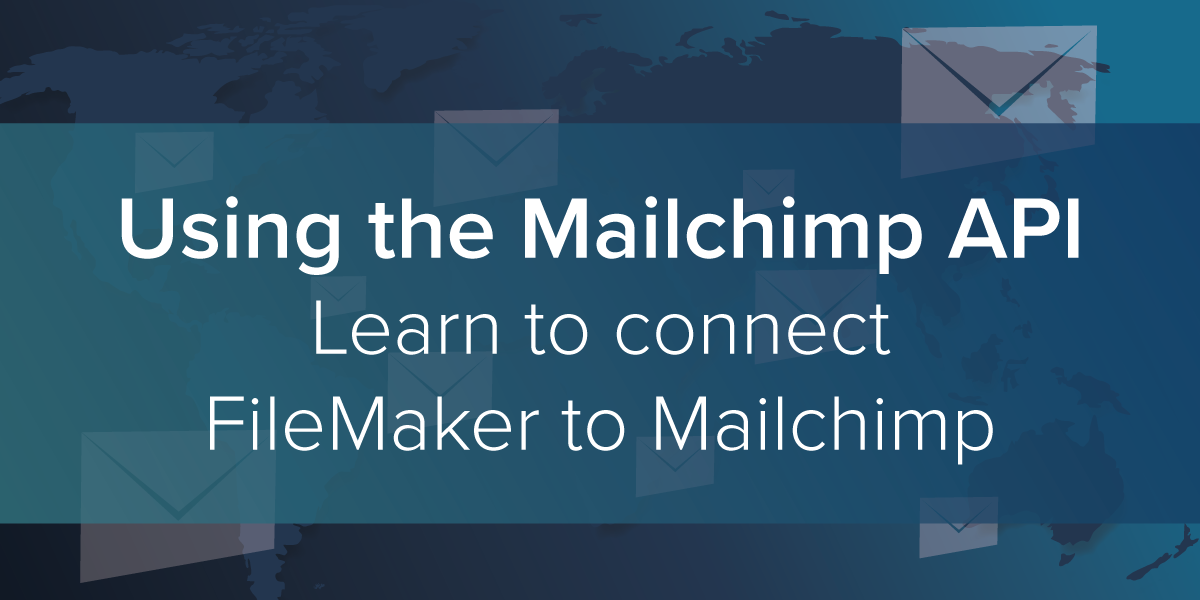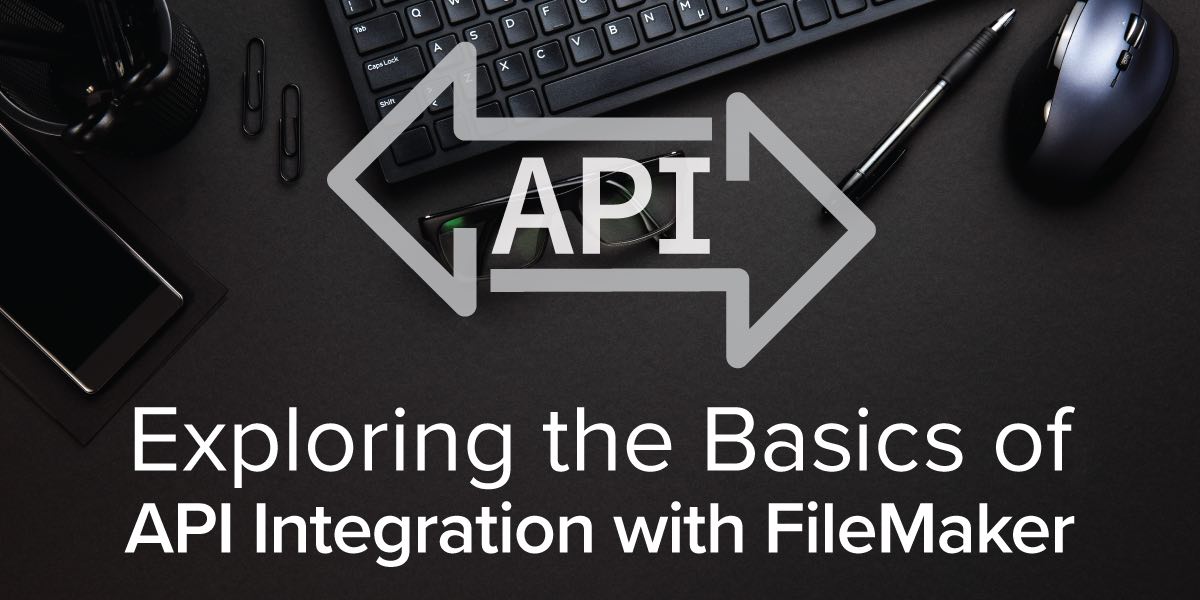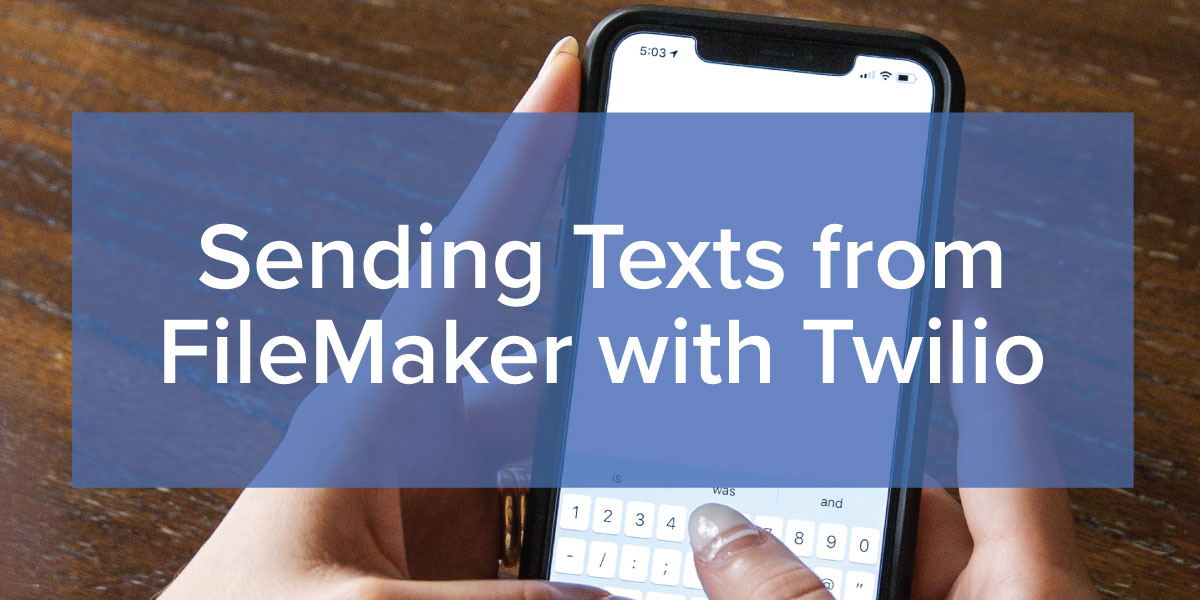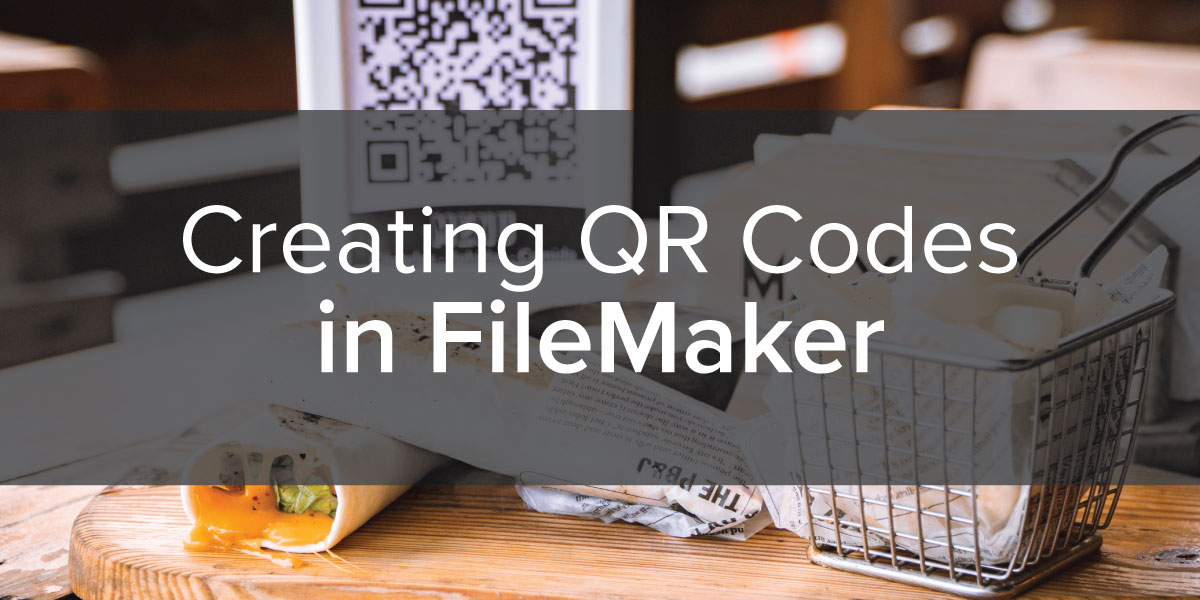Connect FileMaker to Mailchimp with our Mailchimp API course at Productive Computing University! Are you looking for ways to improve your business’ marketing? From email to social media to landing pages and more, bring all your needs onto a single platform. Let us take you a step further and help you connect FileMaker to Mailchimp!
What is Mailchimp?
Mailchimp is one of the most powerful marketing tools available today. Since the first email sent in 1971, the mere capabilities of just a simple click as a means of communication has grown massively into large email campaigns including regulations, compliance, tracking, opting in and out, legalities, and of course, the infamous spam. Emails today carry much more weight in a business’ marketing strategy so gathering these statistics is imperative for tracking the success or failure of any marketing campaign.
You will find that Mailchimp is much more than just a mass email system. It provides real-time facts about the effectiveness of your business marketing strategy.

Why Mailchimp?
Mailchimp provides an abundance of real-time marketing data about your customer’s interaction with your campaign. Mailchimp supplies robust information on who opened emails, when or how often they are opened, and tools to help you analyze the data. A structured business and marketing strategy allows you to spot weak links and take greater action to improve how you reach your audience. Real data will be at your fingertips. This allows for a “smarter, not harder” approach in making modifications to your current marketing strategy.
What does this have to do with FileMaker?
What Mailchimp lacks is all of the detailed information about your customers that is specific to your business. Even with everything that Mailchimp can do for you, there may be times when you want to have access to your data with FileMaker. By integrating FileMaker with the Mailchimp API, you will be able to update your audience (subscriber list) or pull reporting data such as Open rates, Click rates, etc.

Suppose you’re in a bowling league and track all of the team activities and member’s stats in FileMaker and then you send an email campaign to the league.
Mailchimp does not know how many strikes Pat had in the last 150 frames, but FileMaker will have that on record. FileMaker doesn’t know if Pat is opening the email about your upcoming bowling event, but Mailchimp will know if the email was opened and if Pat clicked on any of the links in the email. It will also give you a detailed report about the performance, top links clicked, top locations, and social media performance. When you integrate FileMaker and Mailchimp together, you now have knowledge of both the league stats and how successful you were with your marketing campaign. This lets you understand your customers better to reach them in a more impactful way.
Mailchimp Pricing
Mailchimp is an affordable email marketing solution. Your cost for Mailchimp service is dependent on the number of contacts and monthly emails sent. If you are looking to try out the service, a free account will let you send up to 10,000 emails per month.
Customize the Mailchimp Dashboard with FileMaker
Typically, if you want access to all the Mailchimp information and campaign results, you need to muddle your way through Mailchimp’s website. We at Productive Computing do not find the Mailchimp dashboard relevant for the stats that we need access to – so we decided to create a process to solve this problem. You may or may not be in the same situation, but importing your data to FileMaker gives you the flexibility to customize your own personal dashboard.
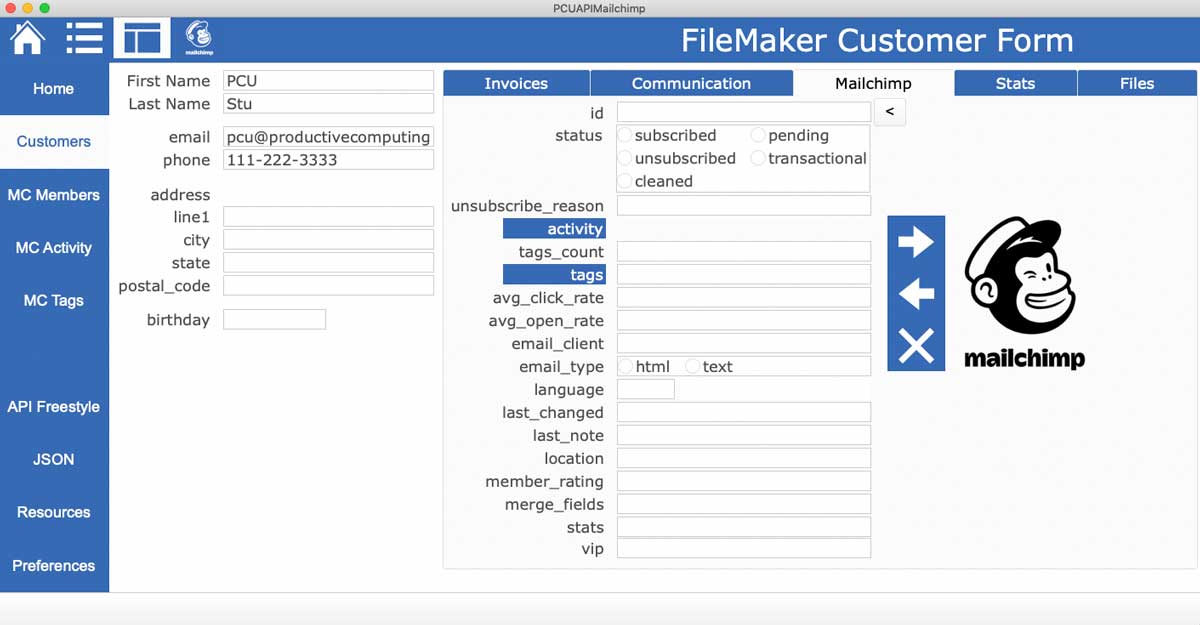
This is where the Mailchimp API can help! By integrating FileMaker with the Mailchimp API, you can create custom layouts and processes that allow you to have all your data on hand. Connecting the two allows you to push/pull your Mailchimp data with FileMaker. By pushing/pulling your Mailchimp information into FileMaker, it makes everything simpler and gives everyone on your team access to invaluable data.
You now have the power to customize any of the details that Mailchimp has to offer:
- Develop a custom marketing dashboard to track and compare your marketing campaigns year over year.
- Create detailed reports that help you answer specific business or marketing strategy questions.
- Increase team efficiency and effectiveness, by placing valuable customer data alongside your contact records. Knowing how often a customer responds to your campaigns may help focus your leads and sales opportunities.
Not only will you have more data readily available, but you will be able to control how you view, use, and interpret the crucial information that Mailchimp houses.
Best Practices for a FileMaker Mailchimp Integration
As a general rule, best practices in a Mailchimp/FileMaker integration means using each tool for its strengths while being sure not to duplicate or overlap like functionality. For example, Mailchimp is the best way to collect new names and emails because users have "authorized" their name to be on a given mail list. Names collected in FileMaker may not have necessarily "opted-in" in a formal way.
On the other hand, FileMaker may be the best way to manage all the other information about a contact. It can be argued that it's undoubtedly a better way to find, manage, edit, filter, and report on contacts. Not to mention, FileMaker is typically used to maintain all the other custom aspects of an organization not available to us in Mailchimp.
So, by using each system in a way that it was originally built for, you get the best of both worlds. With that said, let's look at a few different scenarios on what we see as a typical best practice integration strategy.
Scenario 1
Mail list originates from FileMaker: Scenario 1 assumes that the mail list originates in FileMaker whereby we want to create an easy way to push those addresses up to MailChimp. Granted, this is one of the easier things to actually do manually as MailChimp makes this part as easy as copying and pasting names from excel. However, to do this manually, you would have to "export" the names from FileMaker and then upload them to MailChimp by hand. If this is done often or by users who don’t typically create exports from FileMaker, it not the best method. So, having a single button to push a single name or a list of names from a FileMaker found set can be extremely handy.
Once the campaign is sent out, the API would allow you to import the status/results of the campaign directly back into FileMaker whereby you could collect a history of items sent on behalf of that contact matched on the email address. This is something simply not possible without the use of the API and perhaps the most useful scenario for a given integration.
Scenario 2
Mail list originates from MailChimp: There are some options that allow you to have Mailchimp be a front-end data collector for new customers that sign up to a given newsletter or service. In this scenario, Mailchimp will collect these new names for you. This can be extremely handy because MailChimp has options and accommodations for people to "self-select" a given mail list that they want to belong to. So, a typical scenario would be to pull these names back into FileMaker for production use or analysis. And just like in scenario one, you can import the campaign mail history and associate that to a given contact.
Scenario 3
Names are being collected both in Mailchimp and in FileMaker: In this scenario, you can either push or pull names to synchronize each entity. The best and most reliable way to do this is to match an email address. However, there are some scenarios where a person may be on each list using a different email address. In those scenarios, you may want to look further and provide sync rules based on first and last name as well as company name and/or physical address. With scenario 3, you are talking about additional complexity due to the information gathering on either side of the integration (FileMaker and Mailchimp). You may find that your best bet is to stick to scenario one or two outlined above if you can. If that's not an option, then you'll want to plan on a "rulebook" of scenarios to handle things when duplicate names are introduced when combining the lists.
Other ideas (Category and Tag Management)
Mailchimp allows you to categorize and tag contacts to keep them organized and to help you define which groups to send various campaigns to.
In an advanced scenario, you could manage tagging and categorization directly from FileMaker and then update that data using the Mailchimp API. FileMaker is where you would typically have more information about your contacts with access to fields and information not available directly in Mailchimp. Therefore, it could be the best place to manage how they are tagged and categorized.
Our Connect FileMaker to Mailchimp Course Can Help
With the vast resources available through the Mailchimp API, you will have the right information at the right time. The data that was cumbersome to obtain prior is now right at your fingertips.

Integrating software through REST APIs has become more important and prolific. It may appear overwhelming or more difficult than a foreign language for those who have never attempted an integration. However, once you have observed the process of a successful integration from start to finish, you will feel much more comfortable.
In our “Connect FileMaker to Mailchimp” course, we walk through each part of the integration process. Each piece of the puzzle is not necessarily hard to understand, but some parts can be complicated. While we provide extensive documentation that we discovered and demonstrate, there are still several areas where even those with API experience have difficulty mastering.
Sometimes you will stumble across important elements missing in the documentation. Other times there are brazen assumptions made that cause huge delays in completing the connection. You may even see instructions are in the wrong place or missing completely. Some instructions are not clear, and still others are incorrect in practice.
Though all APIs are very similar, they are also very different. For this reason, you will save hours and hours of time and frustration by taking the course instead of trying to finish the process on your own. We know, because that is how we had to do it.
In both marketing and FileMaker development, doing the wrong thing over and over can be frustrating and expensive. But when you can successfully follow along step by step, there are so many new opportunities for growth. When you have seen the online training and used the downloadable FileMaker sample app, you learn what to look for, where to look for it, what to do, and what not to do. At that point, the entire connection process becomes much more straightforward. You begin to wonder, how did you live without this before?
How Do You Get Started With APIs?
There is so much to learn about APIs, and fortunately, we have tons of resources available! From courses to videos, blogs, and more, we have a ton of useful information to get you started. Watch this video to discover some of our API resources.

For more information on working with APIs have a look at these additional resources:
- The API Fundamentals for FileMaker Developers course from Productive Computing University covers how they work, common use cases, how to set up the connection, how to prepare API calls, and how to parse responses. This course focuses on working directly with the FileMaker Data API as the foundation.
- API DevCon Session: This session, titled “How to Understand the Basics of API,” reviews the basics from this blog and more!
- DocuSign: The "Connect FileMaker to DocuSign API" course will show you the step-by-step process of integrating FileMaker with several key modules in DocuSign so you can control data flow or monitor activity within your own FileMaker app.
- Stripe: In our course “Connect FileMaker to Stripe API," you learn how to connect FileMaker with their API, and how to seamlessly work with all data from a Stripe account for reporting, tracking, integration, and processing a payment. Or read through our blog.
- Charting and Tableau: Our “FileMaker Charting and Beyond” course was created specifically for developers needing to demystify the fundamentals of FileMaker charting. We show you how to create and configure all 10 of the different FileMaker charts and demonstrate using an API connection to the free version of Tableau.

